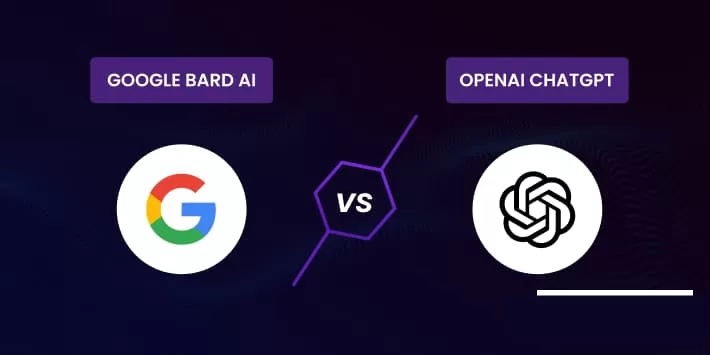Artificial intelligence tools like OpenAI GPT-4 and Google Bard are revolutionizing how we approach creative writing, coding, and productivity tasks. This detailed comparison evaluates these tools across key aspects like speed, user-friendliness, capabilities, integration, pricing, security/privacy, multilingual support, accuracy, customization, accessibility, and their use in IT and coding.

1. Speed
- OpenAI GPT-4: Handles a wide variety of tasks efficiently, though response times may vary depending on the complexity of the prompt and platform used.
- Rating: 4.5/5
- Google Bard: Provides quick and conversational responses, leveraging real-time web data for up-to-date answers. However, performance can be slower with complex queries.
- Rating: 4.5/5
Summary: Both tools offer excellent speed, with GPT-4 excelling in creative and technical tasks, while Bard provides fast conversational responses.

2. User-Friendliness
- OpenAI GPT-4: Intuitive for most users, but fully utilizing its capabilities may require familiarity with its platforms or integrations.
- Rating: 4/5
- Google Bard: Designed for seamless, easy-to-use conversational interactions, making it accessible to a wide audience.
- Rating: 4.5/5
Summary: Bard is slightly more user-friendly for general use, while GPT-4 appeals to users with specific, advanced needs.

3. Capabilities
- OpenAI GPT-4: Exceptionally versatile, excelling in creative writing, technical problem-solving, coding, and brainstorming.
- Rating: 4.5/5
- Google Bard: Focuses on providing real-time information and generating creative content, though it is less specialized in technical tasks.
- Rating: 4/5
Summary: GPT-4 is more robust in technical and creative capabilities, while Bard performs well in general conversational tasks.

4. Integration
- OpenAI GPT-4: Accessible through API integrations, making it highly adaptable for developers but requiring technical expertise for implementation.
- Rating: 4/5
- Google Bard: Tightly integrated into Google’s ecosystem, including tools like Gmail and Google Workspace.
- Rating: 4.5/5
Summary: Bard offers seamless integration within the Google ecosystem, while GPT-4 is more flexible for developers integrating into custom systems.

5. Pricing
- OpenAI GPT-4: Offers a free tier (via GPT-3.5) and scalable pricing for GPT-4 usage, making it accessible to individuals and businesses.
- Rating: 4.5/5
- Google Bard: Currently free to access, providing a cost-effective option for users across various domains.
- Rating: 5/5
Summary: Bard is more cost-effective, while GPT-4 provides scalable options for advanced use cases.

6. Security/Privacy
- OpenAI GPT-4: Implements robust security measures but may have limitations in meeting enterprise-level compliance.
- Rating: 4/5
- Google Bard: Backed by Google’s security infrastructure, though concerns about data usage and privacy remain.
- Rating: 4/5
Summary: Both tools provide strong security, but users may have privacy concerns depending on the specific use case.

7. Multilingual Support
- OpenAI GPT-4: Provides exceptional support across a wide range of languages, making it highly suitable for global users.
- Rating: 4.5/5
- Google Bard: Multilingual capabilities are strong but slightly less versatile compared to GPT-4.
- Rating: 4/5
Summary: GPT-4 is superior for users requiring extensive multilingual support.

8. Accuracy
- OpenAI GPT-4: Highly accurate for generating natural language, coding, and complex problem-solving. Occasional inaccuracies may occur in niche or overly technical topics.
- Rating: 4.5/5
- Google Bard: Accurate in conversational tasks and up-to-date information but may falter in technical or complex scenarios.
- Rating: 4/5
Summary: GPT-4 is more precise in technical and creative tasks, while Bard excels in real-time conversational accuracy.

9. Customization
- OpenAI GPT-4: Highly customizable via API access, allowing developers to tailor it to specific needs.
- Rating: 4.5/5
- Google Bard: Limited customization options compared to GPT-4, being designed for general conversational use.
- Rating: 3.5/5
Summary: GPT-4 offers greater customization for advanced applications.

10. Accessibility
- OpenAI GPT-4: Available across various platforms, including third-party integrations, making it accessible to a wide audience.
- Rating: 4.5/5
- Google Bard: Freely accessible to users with a Google account, providing broad availability.
- Rating: 5/5
Summary: Bard is more accessible for general users, while GPT-4 caters to those needing advanced functionality.

11. IT and Coding
- OpenAI GPT-4: Excels in coding tasks, including generating code snippets, debugging, and explaining complex technical concepts.
- Rating: 4.5/5
- Google Bard: Capable of assisting with basic coding tasks but less proficient compared to GPT-4 in handling in-depth programming challenges.
- Rating: 4/5
Summary: GPT-4 is significantly better for IT and coding-related applications.
Who Should Use Them?
- OpenAI GPT-4: Ideal for developers, researchers, and creative professionals who require advanced problem-solving, coding assistance, and creative writing.
- Google Bard: Perfect for general users seeking conversational assistance, real-time information, and basic creative content.
Works Best For
| OpenAI GPT-4 | Google Bard |
|---|---|
| Coding, technical problem-solving, creative writing, and advanced brainstorming. | Conversational assistance, real-time information retrieval, and creative writing. |
Conclusion
OpenAI GPT-4 excels in coding, creative problem-solving, and technical applications, making it a better choice for developers and professionals. Google Bard, on the other hand, is a versatile tool for everyday users, providing conversational assistance and real-time information. The choice depends on whether your priority is advanced functionality or ease of use.
We’d Love to Hear from You!
- Which tool do you think suits your needs better—GPT-4 or Bard?
- Have you used either of these tools for your projects or daily life? How was your experience?
- What features or improvements would you like to see in these tools?


Leave a Reply